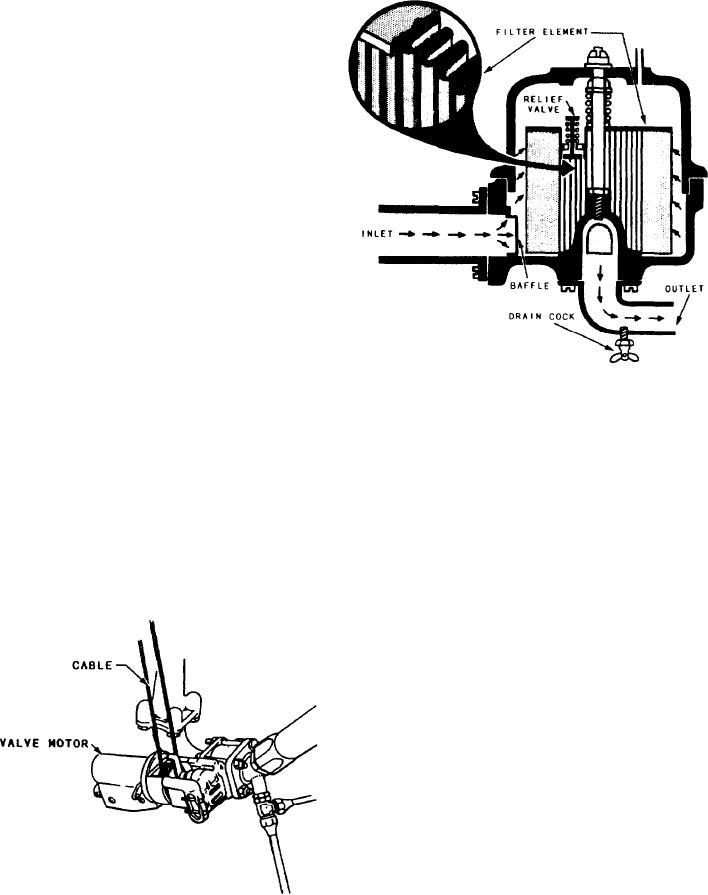
parts of the fuel system. It is designed as an open-
and-closed valve and is motor-operated. The gate
or sliding portion of the valve slides between
O-rings or other suitable sealing devices in the
body of the valve. On some models, an indicator
is attached to the gate to show the position of the
valve while installed in the system. Some of these
valves have a cable and drum between the motor
and valve mechanism to provide for manual over-
ride. This mechanism may be used if the electrical
motor is defective. Figure 4-23 shows a motor-
operated gate valve with a manual-override
mechanism. The installation and rigging of motor-
operated gate valves are similar to those of the
fuel selector valves. However, the motor-operated
gate valves that have no manual override require
no adjustment on installation.
FILTERS
The three most common types of filters in use
are the microfilter, the wafer screen filter, and the
plain screen mesh filter. The individual use of each
Figure 4-24.-Aircraft fuel filter (microfilter).
of these filters is dictated by the filtering
treatment required at a particular location.
cellulose material, frequently used in the construc-
Microfilter
tion of filter cartridges, removes foreign matter
measuring 10 to 25 microns. The minute openings
make this type of filter susceptible to clogging;
The microfilter, shown in figure 4-24, has the
therefore, a bypass valve is a necessary safety
greatest filtering action of any present-day filter,
factor.
and it is rated in microns. (A micron is a
thousandth part of 1 millimeter.) The porous
Since the microfilter does such a thorough job
of removing foreign matter, it is especially
valuable between the fuel tank and engine. The
cellulose material also absorbs water, preventing
it from passing through the pumps. If water
does seep through the filter-and this happens
occasionally when filter elements become
saturated with water--the water can and does
quickly cause damage to the working elements of
the fuel pump and control units. These elements
depend solely on the service fuel for their
lubrication. To reduce water damage to pumps
and control units, periodic servicing and replace-
ment of filter elements are imperative.
The most widely used filters are the 200-mesh
and the 35-micron filters. They are used in fuel
pumps, fuel controls, and between the fuel pump
and fuel control where removal of microscopic
particles is needed. These filters, usually made of
a fine-mesh steel wire, are a series of layers of
Figure 4-23.-Motor-operated gate valve and override
wire. This type of filter replaces the wafer screen
mechanism.
described in-the next paragraph.
4-27

